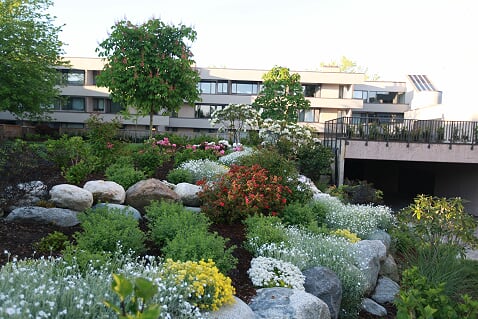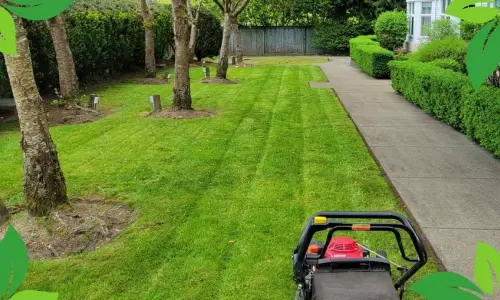

Topsoil vs Compost: Which is best for your garden?
Are your plants struggling to reach their full potential? Frustrated with lackluster yields and plants that seem to wither away? It’s time to address the underlying issue and transform your soil from ordinary to extraordinary. In this comprehensive guide, we will explore the differences between compost and topsoil, their benefits, and the best ways to use them in your garden. Whether you’re starting a new garden bed, improving existing soil, or seeking optimal plant growth, understanding the distinctions between compost and topsoil will help you make informed decisions.
Compost vs Topsoil: A Quick Comparison
Compost is a nutrient-rich organic material that arises from the decomposition of various organic materials like food scraps, grass clippings, and leaves. It goes through a natural process called composting, where microorganisms break down the organic matter, resulting in a dark and crumbly substance.
Topsoil refers to the upper layer of soil found on the Earth’s surface. It varies in quality and can be sourced from construction sites or farmland.
What is Compost?
Compost is a nutrient-rich soil amendment created through the decomposition of organic materials such as grass clippings, food scraps, and yard trimmings. As these materials break down, often in a compost bin, they undergo a transformation, resulting in a valuable natural fertilizer that is commonly used in vegetable gardens, flower beds, and other planting areas.
In addition to its role as a fertilizer, compost offers several advantages for home gardeners. Compost also helps improve water retention in the soil, reducing the need for frequent watering and aiding plants in withstanding dry conditions. Furthermore, compost enhances the structure of garden soil, promoting better aeration, drainage, and root penetration. This leads to healthier plant growth and development.
One of the best attributes of compost is that it can be produced right in your own backyard. By composting organic waste materials, you can create your own nutrient-rich compost pile. However, if you prefer not to engage in home composting, you can conveniently purchase compost in bags from local garden centers or in larger quantities from soil processing facilities.
Different types of compost, such as organic compost or fish compost, may be available, each offering unique nutrient profiles. Regardless of the type, compost is an excellent addition to garden soil, providing essential nutrients that support plant health and productivity. Incorporating compost into your garden will undoubtedly contribute to the overall success and abundance of your plants.
The Benefits of Compost
Enriching Soil Structure and Fertility
Compost enhances the structure of soil by improving its texture, crumbly consistency, and overall quality. When incorporated into the soil, compost helps loosen compacted soil, allowing for better root growth and nutrient uptake. It also aids in the formation of aggregates, which create air pockets and spaces for water movement. The improved soil structure promotes healthy root development and facilitates the exchange of gases and nutrients, leading to more vigorous plant growth.
Providing Essential Nutrients
Compost serves as a natural source of essential plant nutrients. As organic materials decompose, they release a wide range of nutrients, including nitrogen, phosphorus, potassium, micronutrients, and trace elements. These nutrients are vital for plant growth, development, and overall health. Compost provides a slow-release supply of nutrients, ensuring a steady and balanced availability over time. The gradual release of nutrients reduces the risk of nutrient leaching and minimizes the need for synthetic fertilizers, making compost an eco-friendly and sustainable option.
Improving Water Retention and Drainage
One of the outstanding properties of compost is its ability to improve both water retention and drainage in the soil. Compost acts like a sponge, absorbing and retaining moisture, making it available to plants during drier periods. The organic matter in compost helps increase the soil’s water-holding capacity, reducing water runoff and minimizing the risk of erosion. Simultaneously, compost aids in improving soil drainage by preventing waterlogged conditions, allowing excess water to move through the soil profile. This balance of water retention and drainage is crucial for optimal plant growth and resilience, especially in areas with variable rainfall or heavy clay soils.
Suppressing Weeds Naturally
Compost can act as a natural weed suppressant in gardens and landscapes. When applied as a layer of mulch, compost forms a protective barrier on the soil surface, inhibiting weed seed germination and growth. This helps reduce the competition for resources between weeds and desirable plants, promoting healthier plant growth and reducing the need for chemical herbicides. As the compost breaks down, it also introduces beneficial microorganisms and organisms that can further control weed populations by outcompeting them for resources.
Uses of Compost
Lawn Care
Topdressing your lawn with compost helps improve soil health and revitalizes the grass. Spread a thin layer of compost over the lawn and rake it in to fill in bare spots, improve soil structure, and provide essential nutrients. This practice can help increase the organic matter content, enhance water retention, and promote a healthier, greener lawn. Even if you are installing a new lawn, it would be a good idea to use compost before you plant the grass seed for the best results.
Tree and Shrub Planting
When planting trees or shrubs, mix compost with the backfill soil. This helps improve soil fertility, provides a nutrient boost for the newly planted tree or shrub, and encourages root establishment. The organic matter in compost aids in water retention and promotes long-term plant health.
Compost Tea
Compost tea is created by steeping compost in water, resulting in a liquid fertilizer and soil amendment. Use compost tea as a foliar spray or soil drench to deliver nutrients and beneficial microorganisms directly to plant leaves and roots. Compost tea can help improve plant health, enhance disease resistance, and promote vigorous growth.
You can find a great recipe for compost tea here.
What is Topsoil?
Topsoil is the uppermost layer of soil, typically ranging from 2 to 8 inches in depth, where the majority of plant roots grow and nutrients are abundant. It is a vital component of healthy and fertile soil. Topsoil is formed over long periods through the weathering and breakdown of rocks, organic matter decomposition, and the action of microorganisms, plants, and animals.
Topsoil contains a diverse mixture of organic matter, minerals, water, air, and beneficial microorganisms that support plant growth. It is rich in essential nutrients such as nitrogen, phosphorus, potassium, and micronutrients, which are vital for plant development.
The quality of topsoil can vary based on factors such as location, climate, and natural processes. Good-quality topsoil is characterized by a loose, crumbly texture that allows for proper root penetration, water retention, and drainage. It provides a favorable environment for beneficial soil organisms and promotes healthy plant growth.
Topsoil can be used in various applications, including landscaping, gardening, and construction. It is commonly used to establish new lawns, create garden beds, improve existing soil, and support plant growth in various settings. In some cases, topsoil may be amended or mixed with other materials to enhance its characteristics, such as adding compost or sand to improve drainage.
When selecting topsoil, it’s important to consider its quality and source. High-quality topsoil is typically free from contaminants, weed seeds, and excessive clay or sand content. It is advisable to obtain topsoil from reputable suppliers or conduct a soil test to ensure it meets the specific needs of your project or plants.
Overall, topsoil is a crucial component of healthy soil ecosystems, providing the necessary foundation for plant growth and nourishment.
The Benefits of Topsoil
Nutrient-Rich Environment
Topsoil contains a diverse array of essential nutrients that are necessary for plant growth and development. These nutrients include nitrogen, phosphorus, potassium, calcium, and many others. The presence of organic matter in topsoil enhances nutrient availability and promotes healthy root development, leading to robust and productive plants.
Water Retention and Drainage
The structure of topsoil allows it to retain moisture while also facilitating proper drainage. The organic matter in topsoil acts like a sponge, absorbing and holding water, making it available to plant roots. Adequate water retention helps plants withstand dry periods and reduces the frequency of irrigation. At the same time, the well-drained nature of topsoil prevents excess water accumulation, minimizing the risk of waterlogging and root rot.
Soil Fertility and Microbial Activity
Topsoil contains a rich population of microorganisms, such as bacteria, fungi, and earthworms. These organisms contribute to the decomposition of organic matter, releasing nutrients and improving soil structure. Microbes also play a crucial role in nutrient cycling, breaking down complex organic compounds into forms that plants can readily absorb. The presence of these beneficial organisms in topsoil supports overall soil health and fertility.
Enhanced Plant Growth and Productivity
The combination of nutrient availability, moisture retention, and beneficial microbial activity in topsoil creates an optimal environment for plant growth. Plants rooted in healthy topsoil tend to exhibit vigorous growth, produce higher yields, and exhibit increased resistance to pests and diseases. The improved soil structure and nutrient availability also promote strong root development, leading to better nutrient uptake and overall plant health.
Uses of Topsoil
Garden Beds and Vegetable Gardens
Topsoil is commonly used to create or improve garden beds. It provides a fertile growing medium for plants by enriching the soil with organic matter, nutrients, and beneficial microorganisms. Incorporating topsoil into garden beds helps improve soil structure, promotes root development, and supports healthy plant growth.
Lawn Installation and Repair
Topsoil is essential for establishing and repairing lawns. It is spread over bare or damaged areas to level the surface and provide a suitable base for grass seed or sod. Topsoil helps ensure proper seed germination and root development, leading to a lush and healthy lawn.
Potting Mixes
Topsoil can be blended with other components, such as sand, peat moss, or compost, to create customized potting mixes. These mixes are used for container gardening or indoor plants. Topsoil adds structure and nutrients to the mix, supporting healthy root development and plant growth.
Which is Better for You? Topsoil or Compost?
If you are going to look at both at face value, compost is the easy winner. While it may require more effort to make it compared to conveniently buying a bag of soil, it offers a lot of benefits for both the environment and your plants. Once your compost has undergone the decomposition process, you not only prevent your green waste from ending up in landfills but also obtain disease-free and weed-free soil that can be used easily in any location and for any purpose. The compost you create is cost-free and fosters the thriving growth of all types of plants.






